Best fire-resistant plants – 8 groundcovers, perennials and shrubs that can take the heat
If you live in a wildfire zone, these plant varieties could help to protect your home and yard
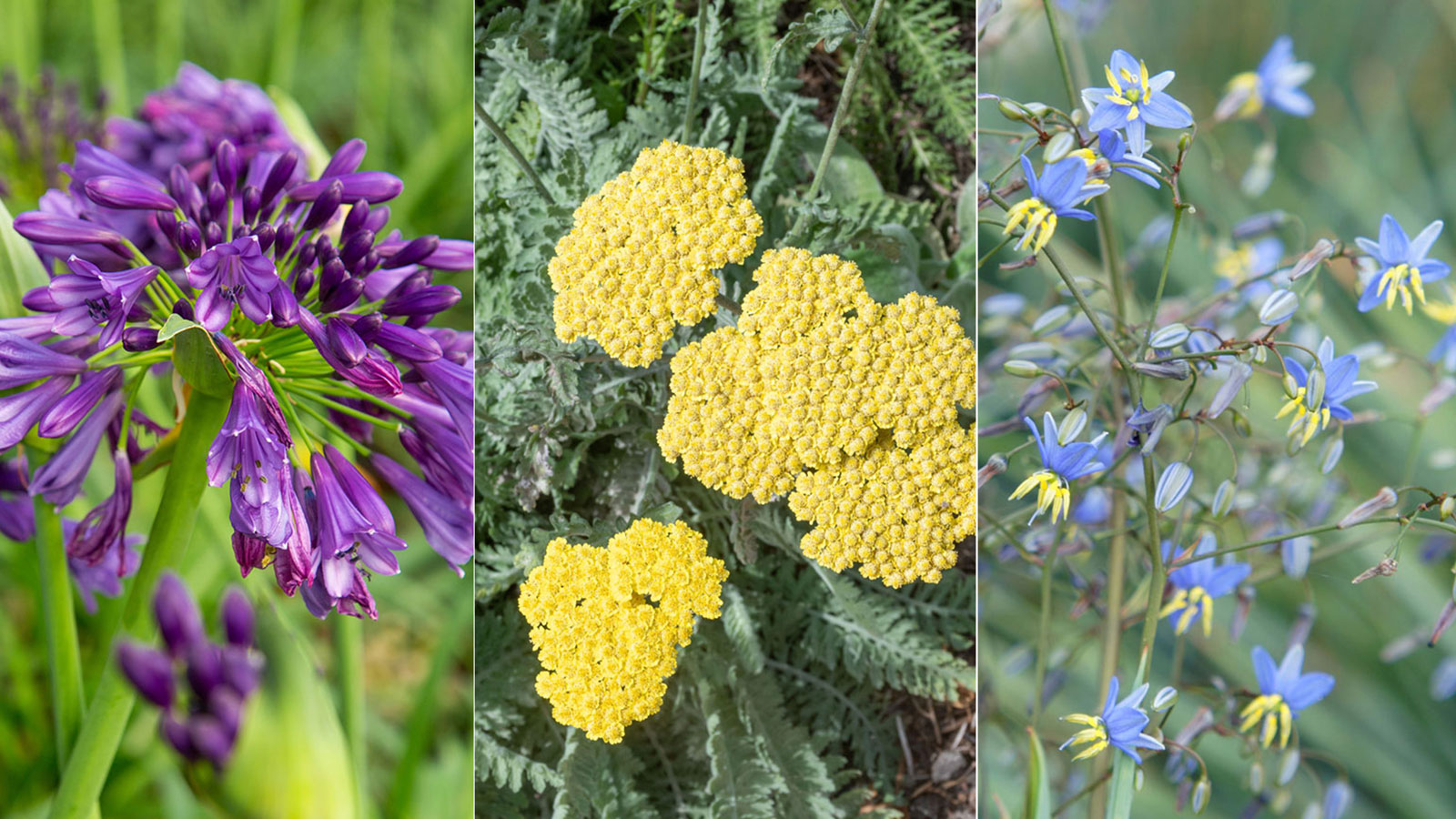

If you live in an area at risk of wildfires, your choice of plants and their placement can play a very important role in protecting your property. Planting correctly can have a big impact on how resistant your landscape will be to wildfires.
Fire-resistant plants are those that don't ignite readily, and they can be grouped together according to several distinguishing characteristics. They tend to have an open branching pattern, don't accumulate dead material in the center of the plant, and the leaves are moist and supple. They don't carry a lot of sap, either.
Of course, just because they're fire resistant doesn't mean these plants can't be damaged, or even killed, by fire. Nor does it mean you can plant them up against your house, or space them inappropriately in your landscape, as both of these things can increase fire risk. The point is they do not significantly contribute to fire intensity. We have spoken to landscaping experts and horticulturalists to curate a list of the best fire-resistant groundcovers, perennials and shrubs to add to your firescaping ideas - and help protect your property in extreme heat.
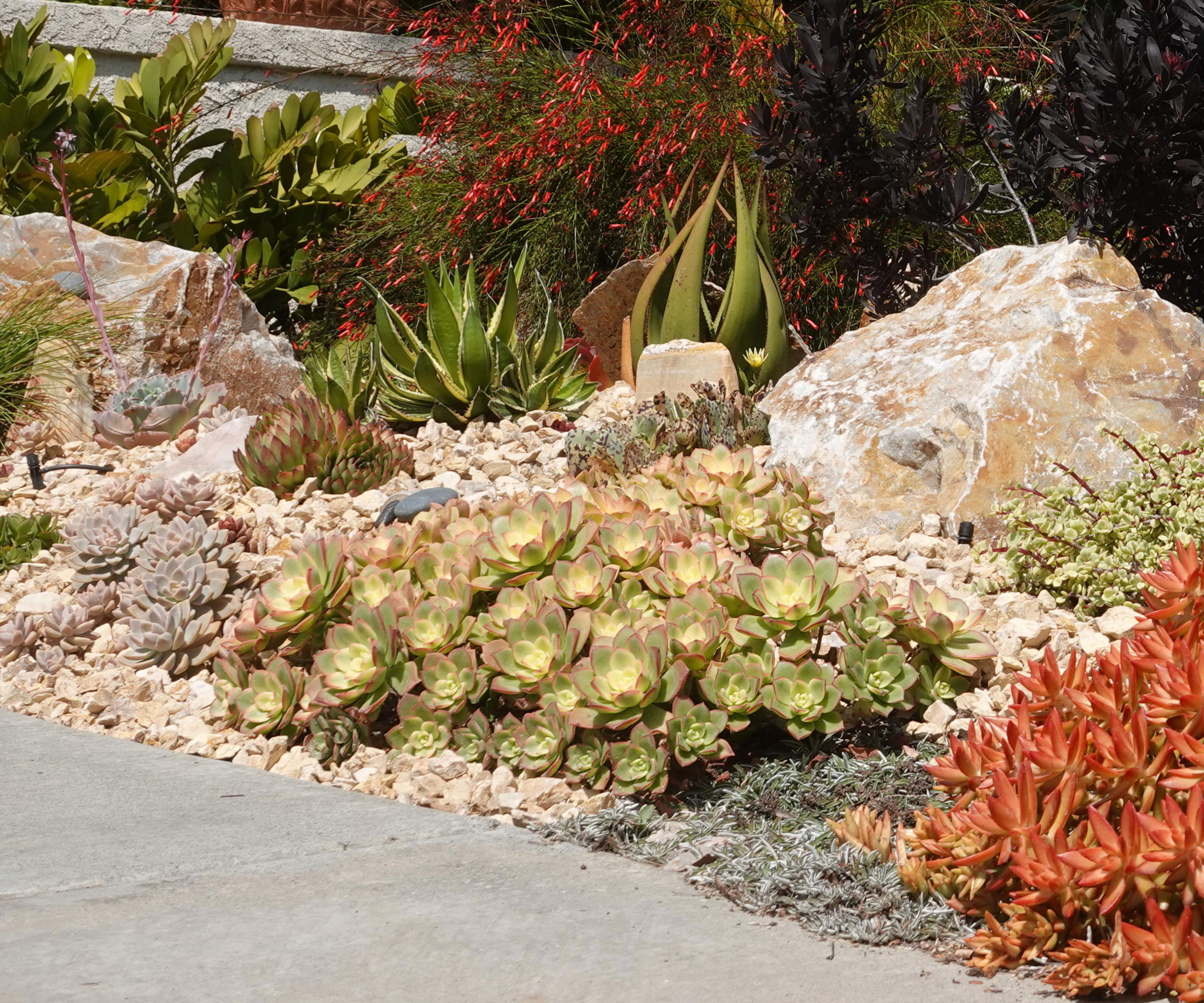
Groundcover plants are a go-to when looking for the best fire-resistant plants
8 of the best fire-resistant plants
'Wildfire threat in arid regions is prevalent, particularly when native vegetation dries out in the summer months,' says horticulturalist and dry climate gardening expert Noelle Johnson. 'Plants can contribute to the danger of wildfire on your property. Thankfully, there are strategies you can incorporate to reduce this danger, from plant placement to the type of plant you choose.'
It's a good idea to avoid planting large masses of plants together if you're planning a dry garden, as well as pruning plants to get rid of old or dead growth, and keep them well watered.
Now a caveat. 'All plants will burn under extreme fire conditions; however, some are slower to ignite than others,' says horticulturalist Janet Sluis, plant expert for Sunset Plant Collection. 'Also, even though these plants have low water use, all plants will be more fire-resistant if they have been recently irrigated.'
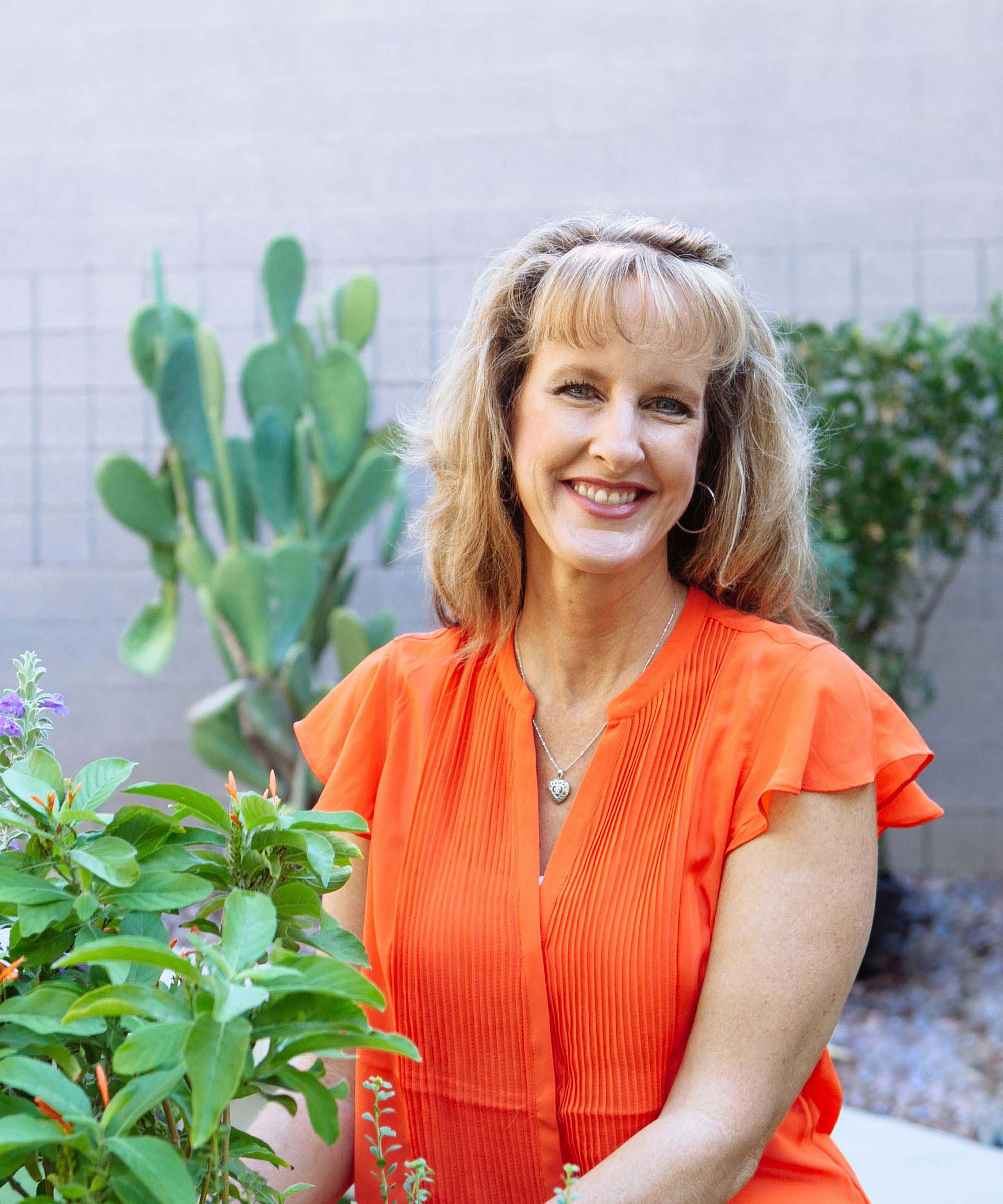
Noelle is a horticulturist, landscape consultant, and garden writer who lives in the Phoenix, Arizona, metro area. Popularly known as the 'AZ Plant Lady,' her passion for over 20 years has been to inspire and teach people to create, grow, and maintain beautiful gardens that thrive in a hot, dry climate. She is the author of Dry Climate Gardening.

Janet is an experienced horticulturist with a demonstrated history of new plant introductions and plant programs within the horticultural industry. She is plant expert for Sunset Plant Collection
1. Sedum
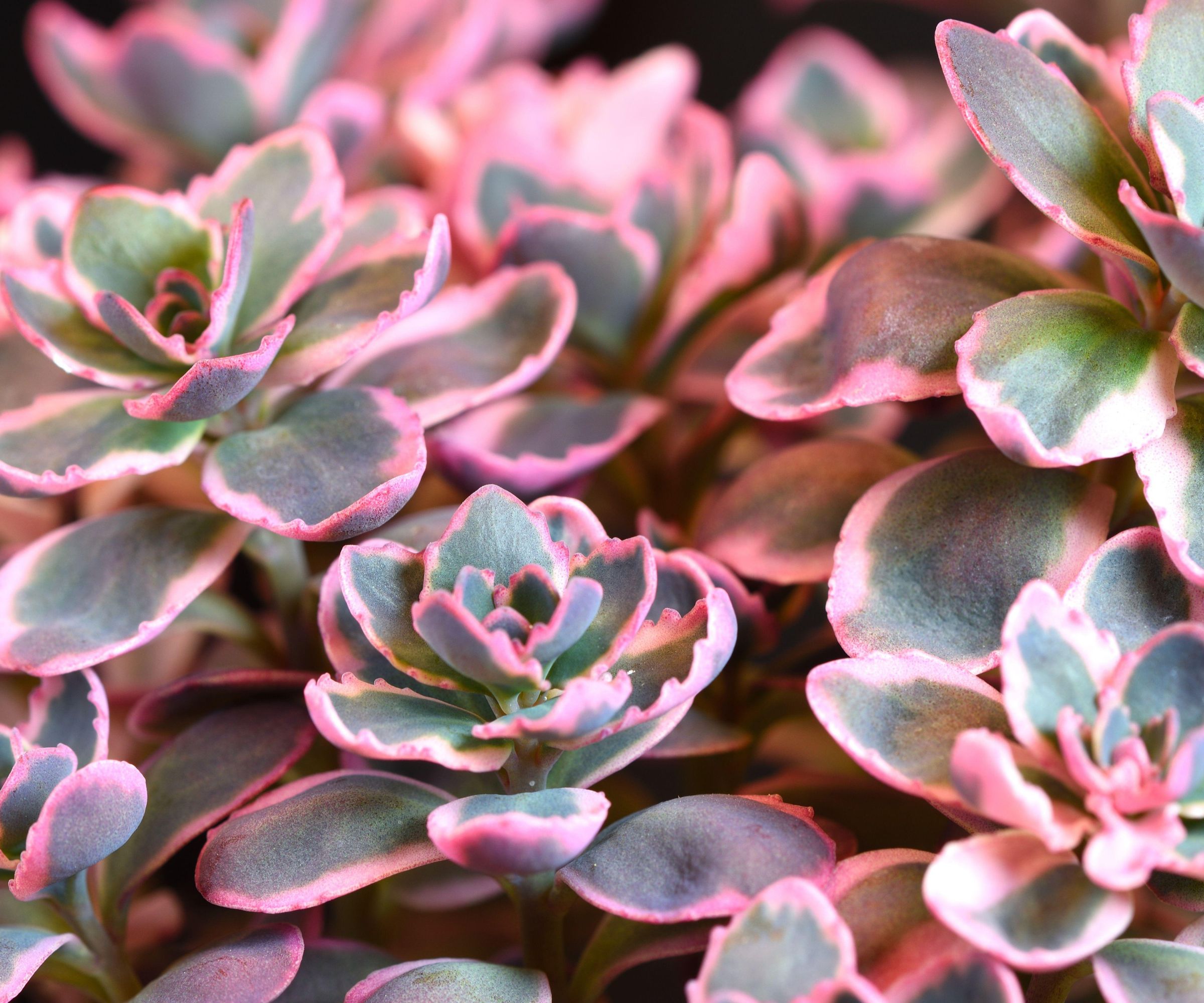
Sedum 'Sunsparkler'
USDA hardiness zones: 3–8
Height and spread: 2–12 inches x 6–24 inches
Type: groundcover
Groundcover plants like sedum can be planted in groups to create a blanket-like effect to fill garden spaces. They make a good substitute for turf lawns too, which need a lot of watering and maintenance to ensure they do not contribute to property fire risk.
'Be careful not to allow groundcovers to run together,' says the team at Oregon State University Extension Service. 'Allow for space in between plants to create natural fuel breaks.' Fire-resistant groundcovers can also capture burning embers without catching fire themselves.
Sedum is one of the best fire-resistant plants to use as part of your ideas for landscaping with succulents and cacti. It has succulent foliage in shades of green to blue. Many varieties thrive in hot, dry conditions, while others are an important source of nectar for butterflies and bees. Pacific stonecrop is native and has yellow blooms from May to September.
'Groundcover plants prefer sun or part shade,' according to Adrienne Edwards and Rachel Schleiger, authors of Firescaping Your Home: A Manual for Readiness in Wildfire Country, available on Amazon. 'Some can be semi-evergreen, depending on the habitat. All of these can be cut down to the ground periodically to remove old or dead tissues and refresh.'

Adrienne is a plant ecologist, garden designer and environmental consultant. She began her botanical odyssey in the Southeast, spent time in the Midwest, and since 2006 has lived and worked in northern California. After more than 30 years' experience teaching, researching and consulting, plants continue to be her muse. She is currently a faculty lecturer at California State University, Chico.

Rachel specializes in restoration ecology. She has lived in the Sierra Nevada foothills most of her life. Her family and property survived the deadliest and most destructive western fire on record, the 2018 Camp Fire. Since then, she has developed a curriculum to teach about wildfire, both in person and online through Butte College. She is currently a faculty lecturer at both Butte College and California State University, Chico.
2. Dianella
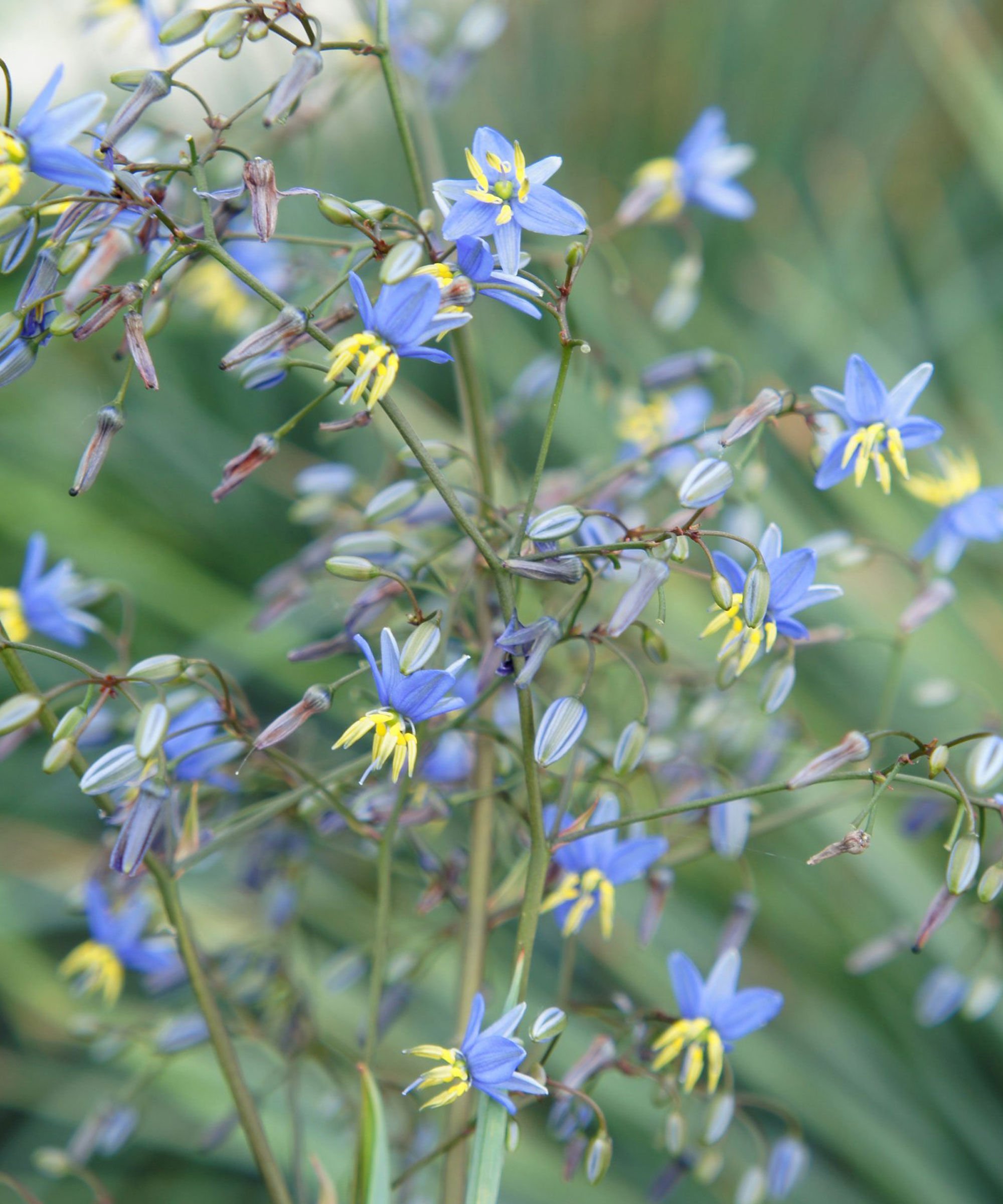
Dianella 'Coolvista'
USDA hardiness zones: 8a - 11b
Height and spread: 1-2′ x 1-2′ feet
Type: groundcover
Dianella is another less flammable, low-growing edging plant choice. 'These grass-like perennials do not contain any volatile oils or compounds and stay evergreen (or ever-blue) year-round,' says Janet Sluis. 'Any plant that also provides food for bumblebees is a great addition to your garden.'
This ornamental grass keeps its lovely blue-gray color and thrives in full sun. Add heat and drought tolerance, a small size, and pale periwinkle blue flowers then royal blue berries in spring and this is one of the best fire-resistant plants you can choose. Pair it with other sun-loving plants in containers, or use as a border.
Many Dianellas have been bred for fewer flowers, but Coolvista™ produces more nectar and pollen-filled flowers for bees.
3. Purple ice plant
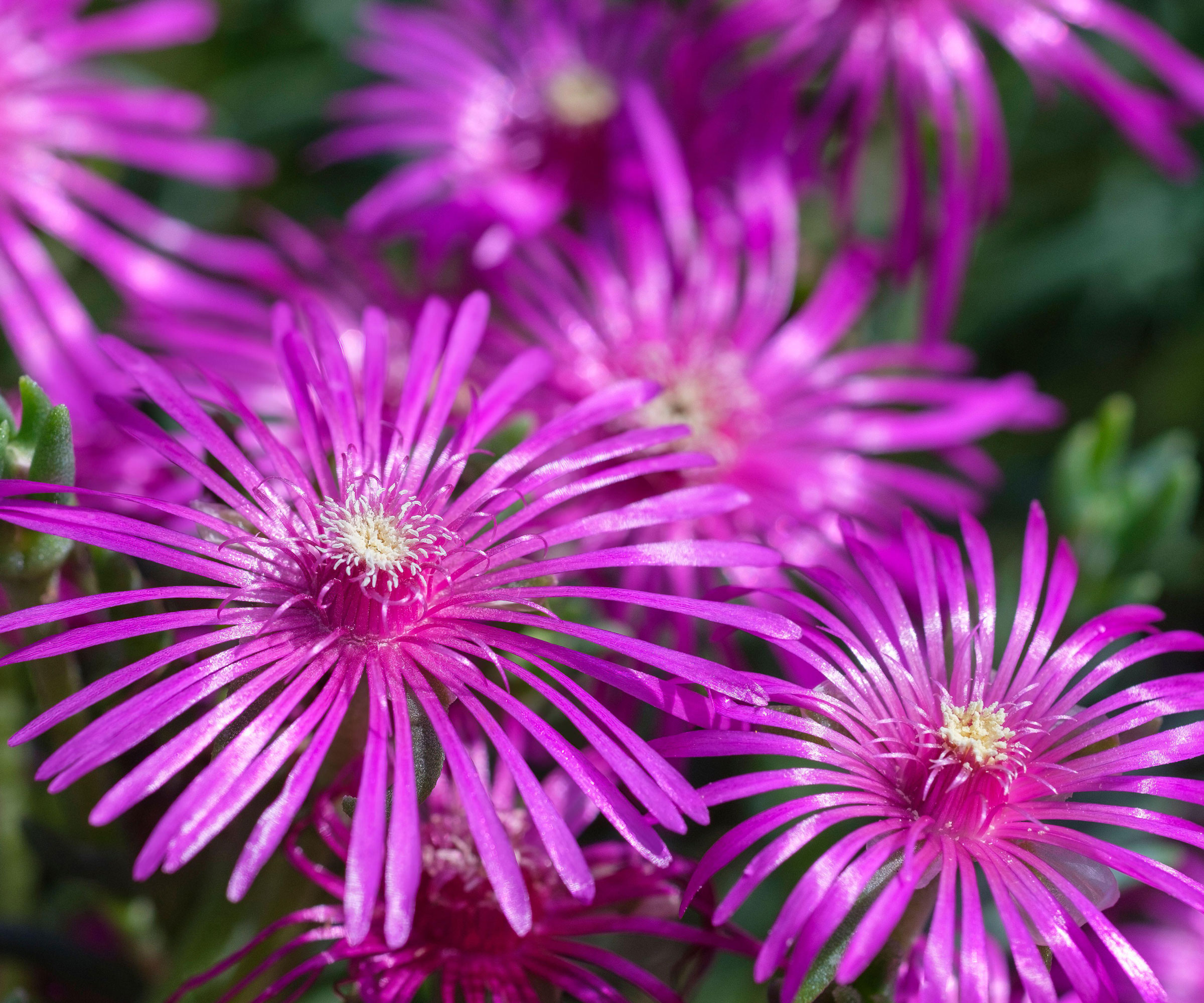
Delosperma cooperi ice plant
USDA hardiness zones: 6–10
Height and spread: 1–3 inches x 24–30 inches
Type: groundcover
This vigorous low-growing succulent with bright purple flowers in the Delosperma species of ice plant is a great choice for hot, dry gardens. It has green foliage that turns an attractive red-bronze color in winter.
Ice plants are a pollinator magnet too. This particular variety blooms prolifically from June to September. In fact, there are so many flowers you won't be able to see the foliage. As well as a long bloom time this variety is noted for being a low-maintenance choice.
Easy to grow, it works particularly well in rock gardens, at the front of borders, and makes a good groundcover for banks and slopes. As well as a range of purple and mauve colors this series also comes in hot oranges and yellows such as 'Tangerine Tango' and 'Banana Blast'.
4. Agapanthus
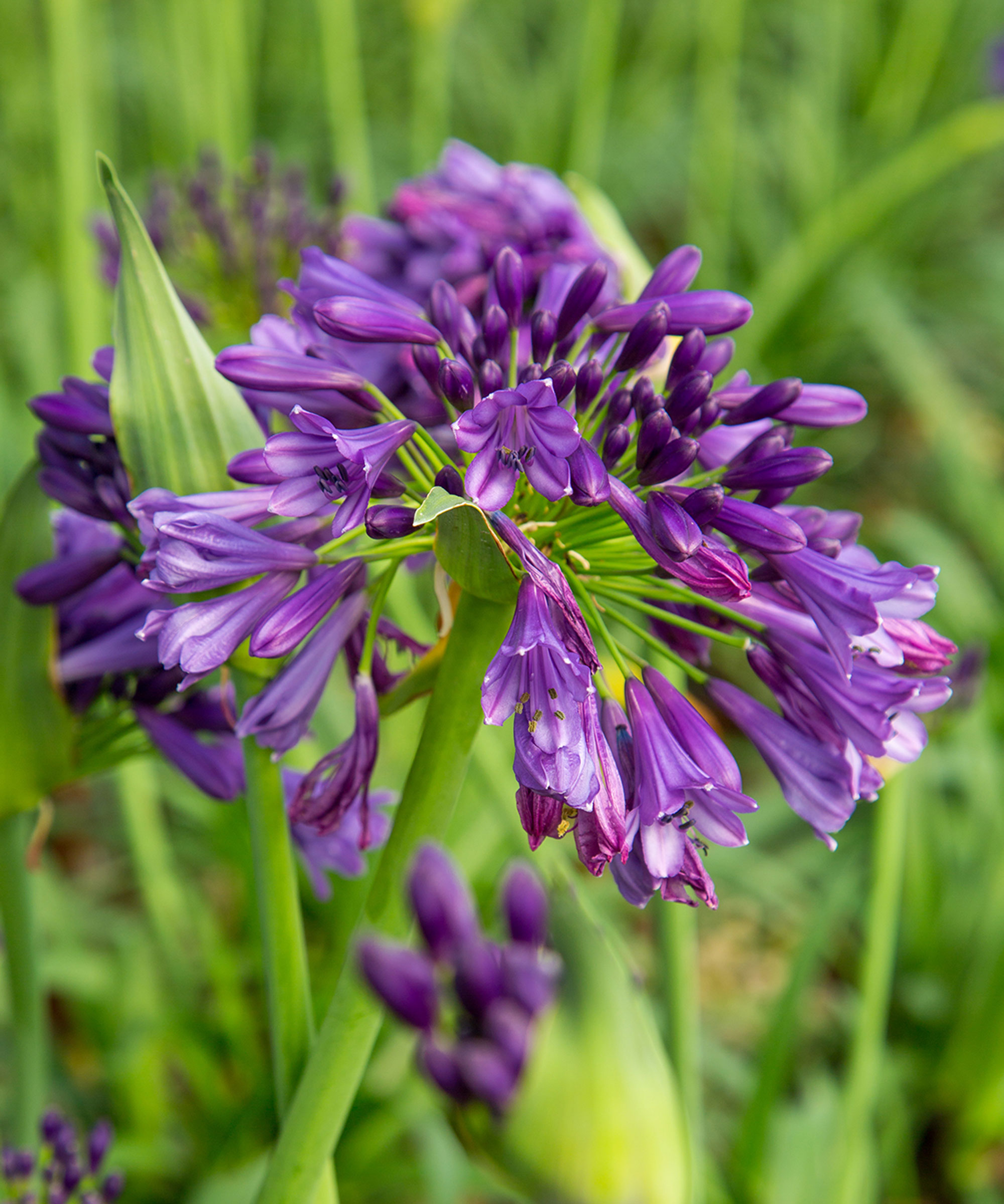
Agapanthus 'Ever Amethyst'
USDA hardiness zones: 8-11
Height and spread: 24-30 inches x 12-18 inches
Type: perennial
When planning the best fire-resistant plants to add to your garden you'll probably be surprised to learn that a lush tropical beauty like agapanthus is up for consideration. Also known as lily of the Nile or African lily, these gorgeous plants definitely make it on to our expert list.
'Since agapanthus leaves are filled with a water-based gel, they can catch wind-blown embers and help slow or even stop the spread of low-burning fires,' says Janet Sluis. 'I love the new 'Ever Amethyst'™ variety, as it reblooms, providing more flowers, and is rated as low water usage by the University of California plant irrigation trials'.
This fast-growing variety, which is a semi-dwarf agapanthus that blooms very early, is tough and drought tolerant. Agapanthus are also a fabulous nectar source for bumblebees and hummingbirds.
Agapanthus also come back year after year. 'Perennial plants can be an important part of your fire-wise landscape,' say the team at Oregon State University Extension Service. 'Remove dieback on plants in fall or spring to reduce fuel load, and design with breaks between clusters of plants.'
5. Yarrow
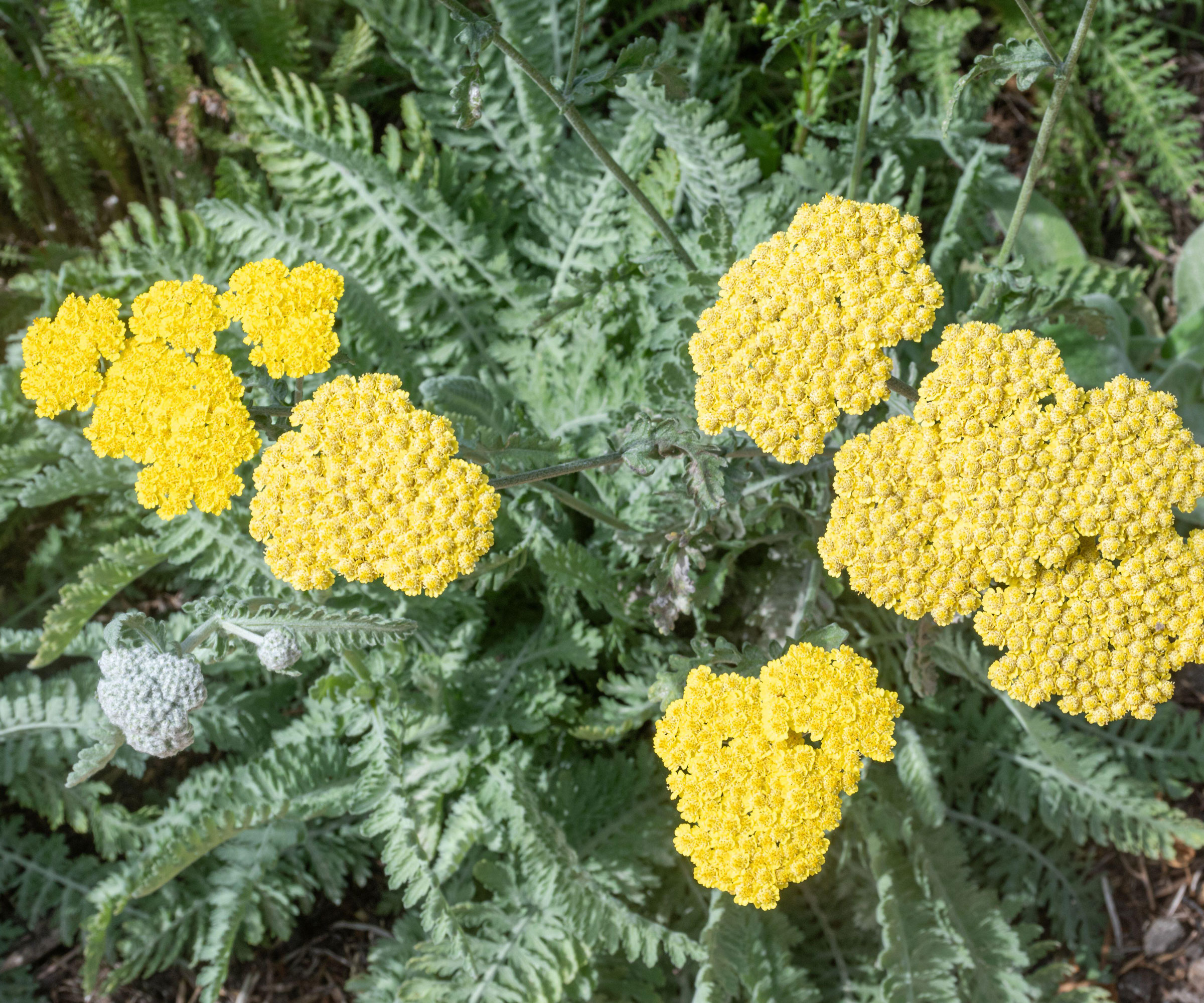
Achillea 'Moonshine' (yarrow)
USDA hardiness zones: 4–8
Height and spread: 6–36 inches x 12–24 inches
Type: perennial
Perennials like yarrow are important plants to grow as part of creating a non-burn zone around your house. The ideal is to grow them in clumps rather than carpet planting them. This is because the closer to your home you get the less vegetation you want.
Yarrow has so many attributes in its favor. Long blooming from May until September and drought tolerant, it's attractive to bees, butterflies and other pollinators. The fern-like foliage in shades of green to gray perfectly complements the yellow, red, pink or white flowers.
It's a good idea to avoid the native variety Achillea millefolium, also known as common yarrow. This grows invasively so it’s not recommended for use in the non-burn zone as it can cause fire to spread. Instead look for cultivars that will not reseed like ‘Moonshine’ and ‘Red Velvet’.
'Use smaller plants near your home, spacing them wider apart,' says Noelle Johnson. 'Larger plants can be added further outward. Avoid planting large masses of plants together.'
6. Western columbine
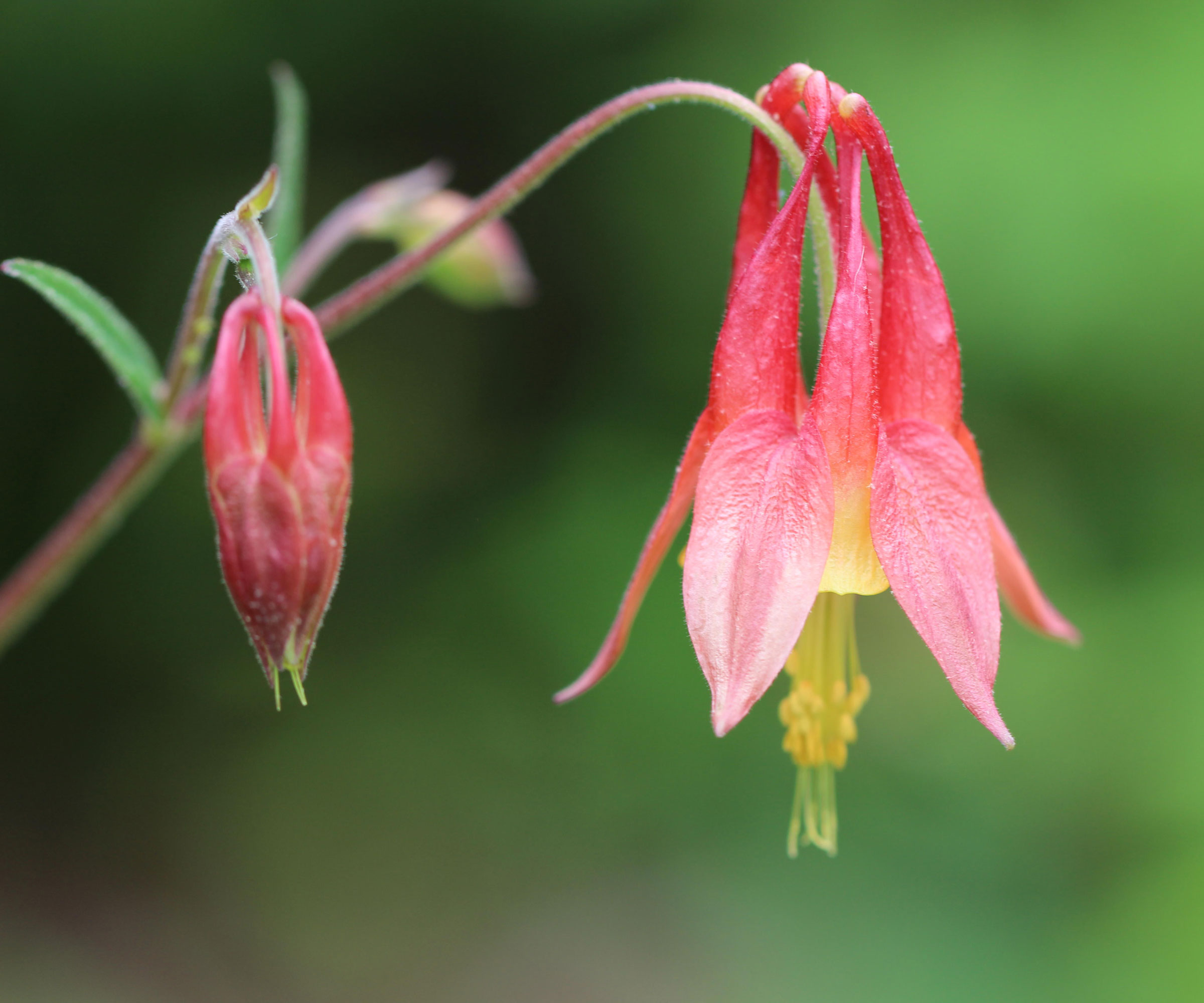
Aquilegia formosa (western columbine)
USDA hardiness zones: 3–9
Height and spread: 12-36 inches x 8–24 inches
Type: perennial
This dainty perennial has spurred, trumpet-shaped blooms in red and yellow from May to July. It has a clump-forming habit, which means it's a good choice in a non-burn zone. It's also fire-resistant due to its high moisture content and low flammability.
The western columbine is also known as the red or crimson columbine because of its flowers, which are very appealing to hummingbirds. Mature seedheads provide food for finches and other bird species.
Its delicate flowers and attractive foliage will add a beautiful note to your firescaping design, and it's also a favorite among pollinators, providing ecological benefits in addition to fire resistance.
7. Serviceberry
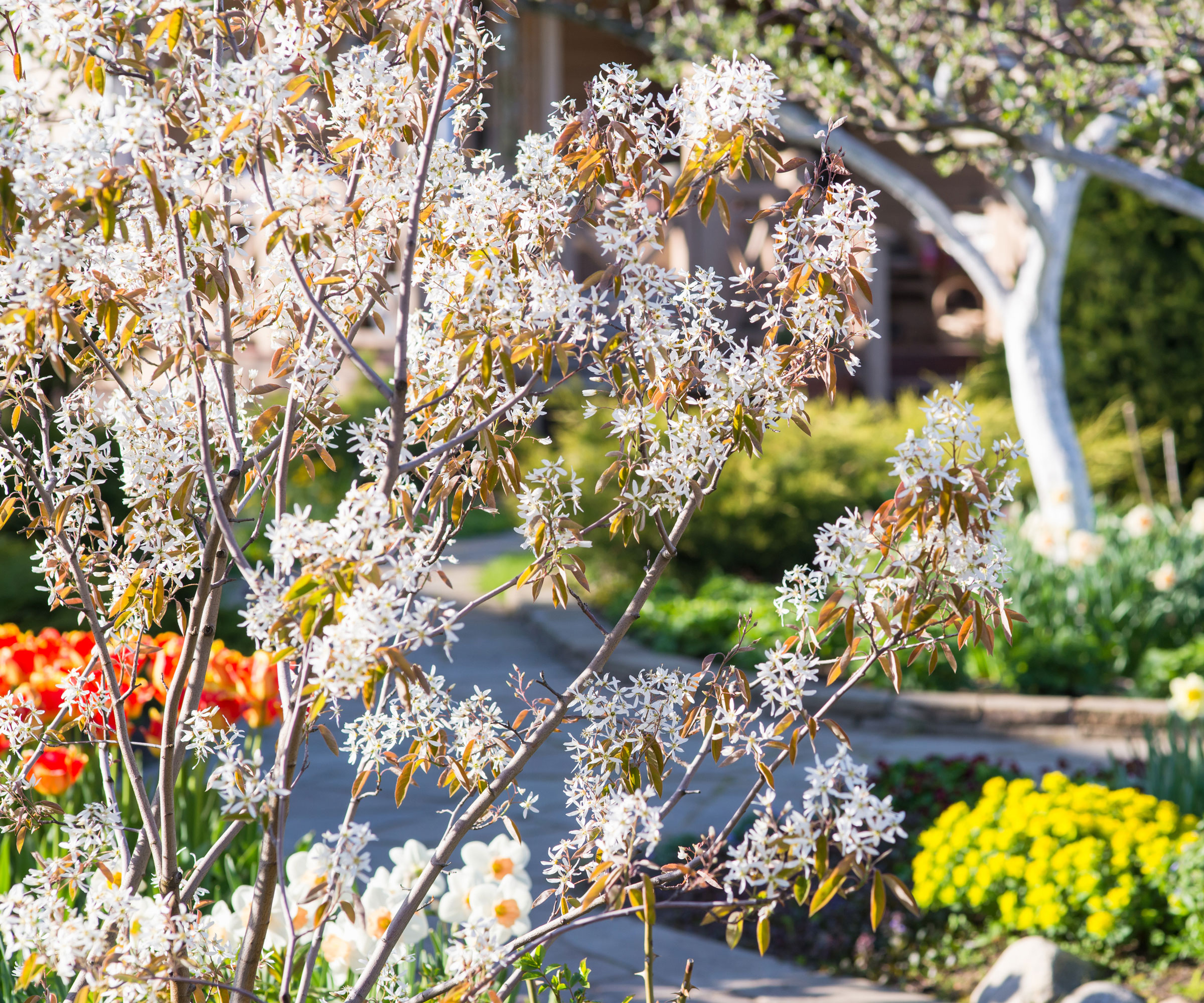
Amelanchier lamarckii (serviceberry)
USDA hardiness zones: 3–10
Height and spread: 6–10 feet x 5–12 feet
Type: shrub
This ornamental landscape plant is adaptable to a range of growing conditions. It takes the form of a multi-stemmed shrub or tree (in fact, it's one of the best trees for small gardens). Also known as juneberry, saskatoon, shadbush and sarvisberry/sarvis, what makes serviceberry one of the best fire-resistant plants is its open branching patterns and moist leaves.
It's important to add the right shrubs to your landscape if you live in a wildlife region. 'Shrubs can often serve as ladder fuels, which should be avoided in a fire-wise landscape,' according to the team at Oregon State University Extension Service. 'Consider placement and spacing for effective fire-wise design.'
Native to North America, serviceberry is easy to grow and offers year round interest. Serviceberries are one of the first shrubs to bloom in spring, provide delicious fruit all summer long, then add dramatic red-orange fall color to your landscaping. Their open branching habit means they are easy to keep in shape too, as well as enabling the easy removal of any dead wood, which is a necessary fire-deterrent measure.
8. Shrubby cinquefoil
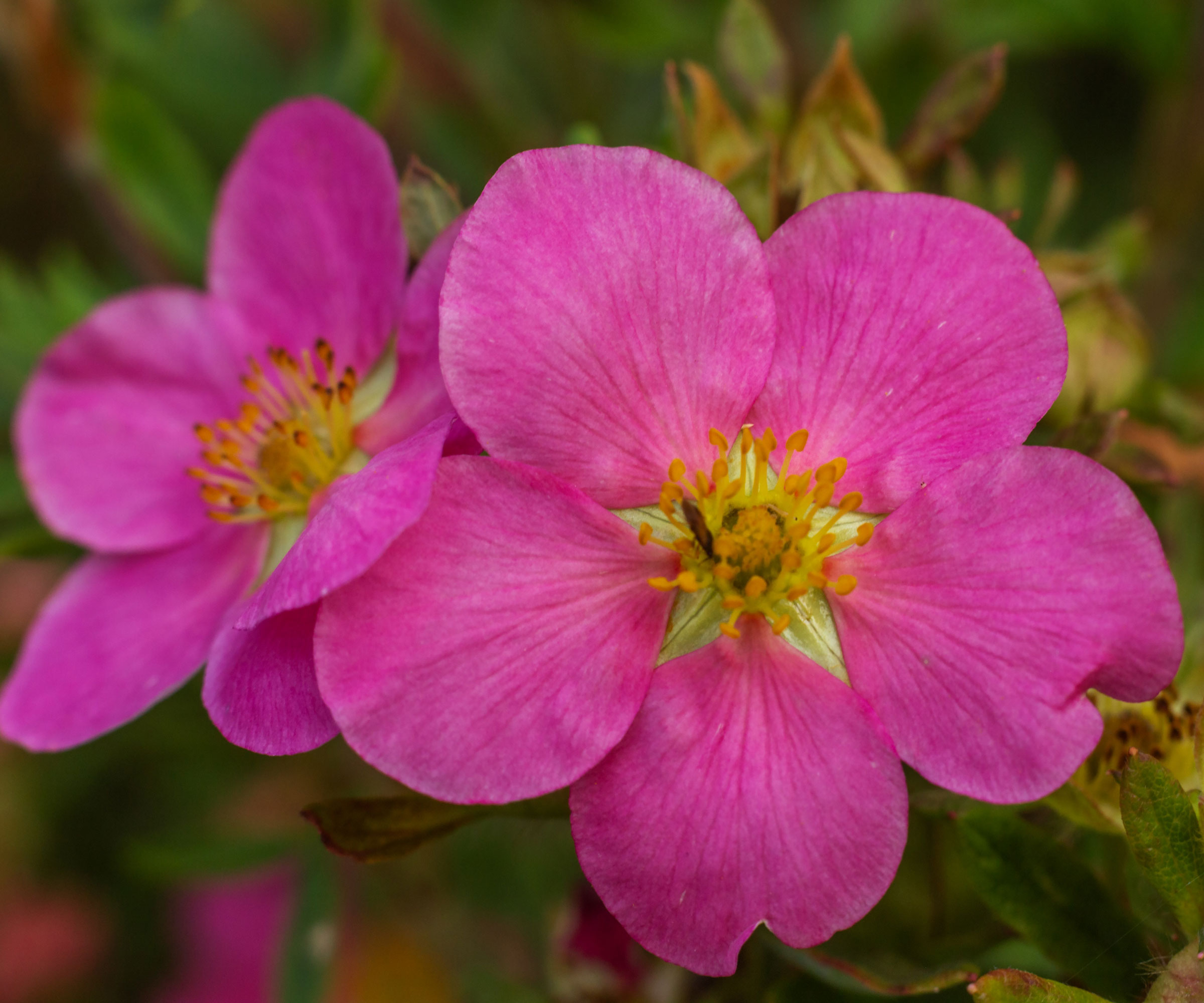
USDA hardiness zone: 2–7
Height and spread: 2–4 feet x 2–4 feet
Type: shrub
A versatile addition to any landscape, shrubby cinquefoil (formerly known as Potentilla fruticosa) is considered a good choice for fire-prone areas as it has low amounts of waxes, oils and resins. It can be used as a hedge, massed along a slope, or as a feature plant in rock gardens.
An easy care, hardy addition to your garden, it's a tough garden plant that produces flowers all summer long. The pretty saucer-shaped blooms come in shades of white, yellow, pink, orange or red. A native plant, it makes a pretty backdrop in the garden to attract butterflies, bees and other important pollinators.
Any plant will burn so annual pruning of dead wood and removal of dry material from shrubby cinquefoil is important. Pruning to maintain shape or height is also a good idea. This is best done in spring before flower buds develop which could otherwise be damaged in the process.
FAQs
Are ornamental grasses fire resistant?
Yes and no. Fire enablers are plants that ignite and spread fire. They usually contain a build up of fine, dry, dead material such as leaves in the center. Ornamental grasses often have a dry mass of dead grass stalks at the heart of the plant which is highly flammable.
Varieties such as Mexican feather grass and pampas grass have lots of airy vertical growth and are one of the main types of plant to avoid in fire-wise design. They are fire enhancers as they ripple and sway in the wind, which can fan flames and contribute to fire spread.
The latest research, however, shows that not all grasses are the same when it comes to fire. 'Less flammable grasses have high leaf moisture content, less growth above ground, densely packed leaf blades, a more horizontal growth form, and low levels of tannins or volatile oils,' according to Adrienne Edwards and Rachel Schleiger, authors of Firescaping Your Home: A Manual for Readiness in Wildfire Country, available on Amazon.
Fire avoiders form mats with sparse aerial structures, like West Coast bentgrass. 'Fire resistors may have aerial leaves that burn but don’t kill the plant (at least in moderate fires), like purple needlegrass and California fescue. Cutting grasses back after seed fall and before fire season significantly reduces their ignitability.'
So the good news is choose the right grass and you can include it in your fire-wise garden design after all.
You can also get additional information from your local forestry or fire departments for your particular region, including recommended plant lists.
If you live in a dry climate check out our guide to xeriscaping and xeriscaping mistakes, plus the best xeriscaping plants and drought-tolerant planting ideas to help you create a climate-friendly outdoor space.
Sign up to the Homes & Gardens newsletter
Design expertise in your inbox – from inspiring decorating ideas and beautiful celebrity homes to practical gardening advice and shopping round-ups.
Lifestyle journalist Sarah Wilson writes about flowers, plants, garden design and gardening trends for Homes & Gardens. She has studied introductory garden and landscape design and floristry, and also has an RHS Level 2 qualification in the Principles of Plant Growth and Development. She is a regular contributor to Homes & Gardens and Livingetc. She has also written for Real Homes, Modern Gardens and Country Homes & Interiors magazines.
-
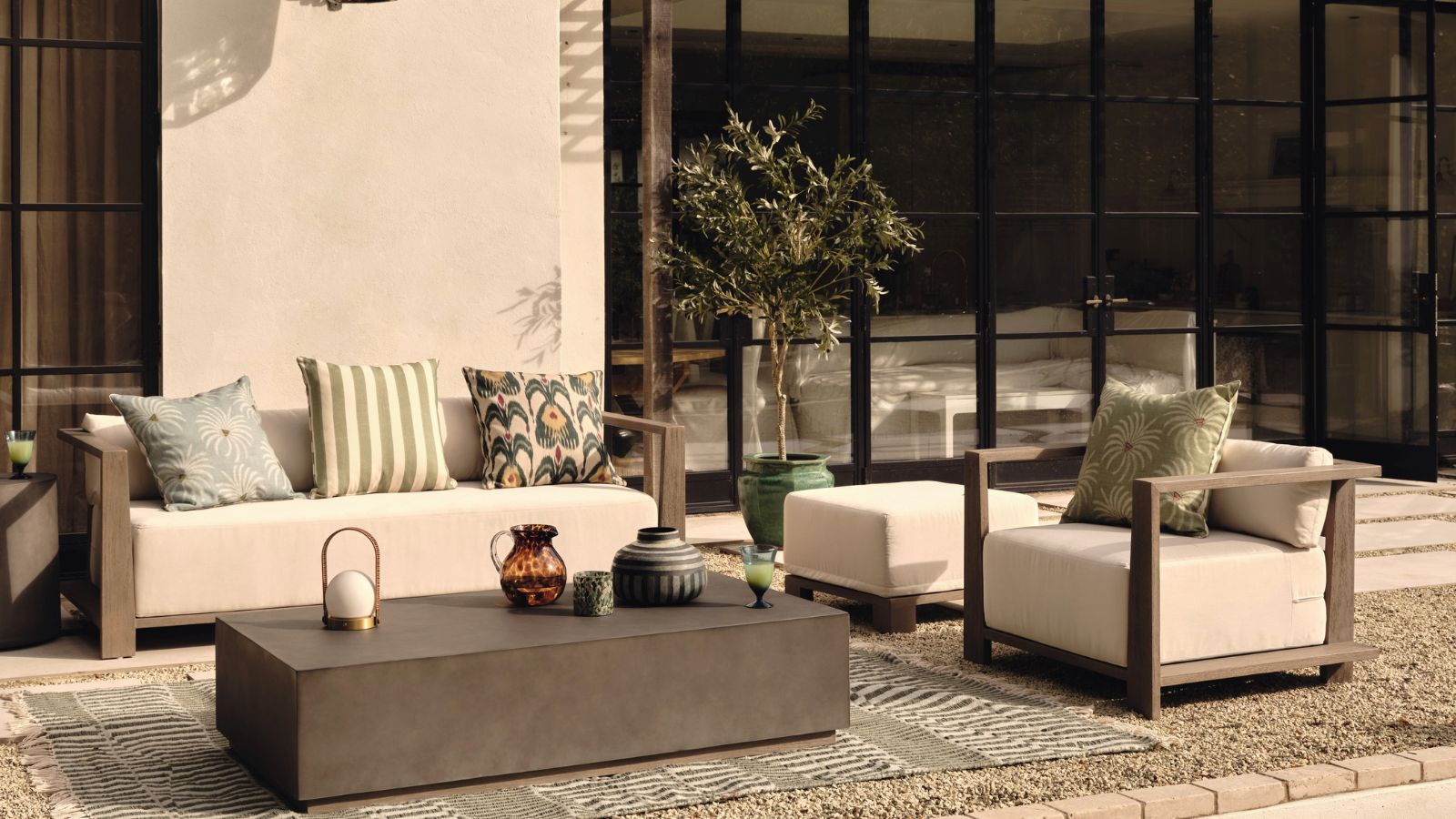 I tried the baking soda trick to quickly and naturally clean my outdoor rug – it’s now set for Easter outdoor hosting
I tried the baking soda trick to quickly and naturally clean my outdoor rug – it’s now set for Easter outdoor hostingBaking soda is perfect for lifting dirt and debris
By Eve Smallman
-
 Drew Barrymore's striped sofa is her most elegant design to date – it oozes East Hampton elegance in time for summer 2025 (and is under $384)
Drew Barrymore's striped sofa is her most elegant design to date – it oozes East Hampton elegance in time for summer 2025 (and is under $384)This subtly striped linen sofa anchors any living room while feeling light and casual – it looks so much more expensive than its price tag
By Megan Slack